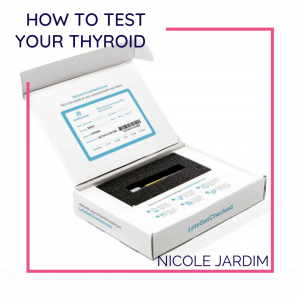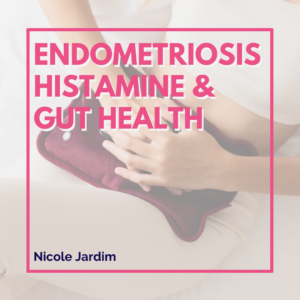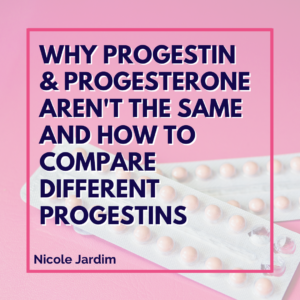Oh, the thyroid.
Tons of women ask me all the time about this lovely little butterfly-shaped gland and how they can make sure she is in top-top shape.
Our thyroids play a huge role in regulating not only our energy and metabolism but also our reproductive health. When a woman goes to her doctor about menstrual/hormonal/fertility issues, the thyroid is not often checked—but it absolutely should be! Why, might you ask? There is a special conversation happening between the hypothalamus, pituitary, and endocrine glands (adrenals, thyroid, and ovaries).
They all work in a series of axes—the HPA Axis (Hypothalamic Pituitary Adrenal Axis), the OAT (Ovarian Adrenal Thyroid Axis), and the HPO (Hypothalamic Pituitary Ovarian Axis)—which means that when one gland isn’t functioning the way it’s supposed to, the other glands will feel the heat.
Over time this leads to a domino-effect breakdown in overall endocrine function—adrenals, thyroid, and ovaries! Think of it as the hormone superhighway: If there’s traffic or an accident, things slow down on the highway, and eventually everything comes to a screeching halt. Ideally, we want 70 mph all day every day!
The Thyroid-Menstrual Cycle Connection
Why can a dysfunctional thyroid cause such a range of menstrual abnormalities and fertility issues? The body-wide hormonal conversation, of course! There are a few ways that the thyroid directly affects your menstrual cycle.
- Thyroid disease (both types) disrupt ovulation (1), resulting in progesterone deficiency. How does this happen? Both hypothyroidism (an underactive thyroid) and hyperthyroidism (an overactive thyroid) disrupt pituitary hormone production (in particular prolactin, FSH, LH), thus messing with the ovulatory process beginning in the brain (2). Additionally, hypothyroidism deprives your ovarian follicles of the thyroid hormone they need to develop (3).
- Hypothyroidism diminishes the body’s sensitivity to insulin (4), which is one reason thyroid disease is associated with polycystic ovary syndrome and can worsen cases of PCOS (5). This can further exacerbate estrogen dominance and progesterone deficiency.
- Hypothyroidism reduces sex hormone binding globulin (SHBG), which leads to higher estrogen circulation in the body and therefore heavier periods (6). On the flip side, hyperthyroidism increases SHBG, which may lead to lighter periods (7).
- Hypothyroidism diminishes the body’s ability to detoxify estrogen effectively, which raises estrogen levels creating an environment that leads to heavier periods.
- Hypothyroidism decreases blood clotting factors, which can cause heavy periods. This is because the role of clotting factors is to control bleeding. In contrast, hyperthyroidism increases blood clotting factors, which in turn causes lighter periods.
- Hypothyroidism is linked to a decrease in stomach acid (HCl) production, reducing the amount of nutrients, especially iron, that can be absorbed into the body and used to produce hormones properly and nourish our eggs.
- Generally speaking, a low-functioning thyroid robs the entire body of energy, including the energy needed to keep the reproductive system up and running flawlessly. Remember, there are thyroid hormone receptors on every cell in the body, so our entire body is dependent on adequate thyroid hormone. Understandably, the body just can’t put energy into ovulation when it is running on an energy deficit and feels like it’s struggling to stay afloat.
If You Are Trying to Get Pregnant
Since thyroid function impacts your menstrual cycle, that means it 100% impacts your fertility. Therefore, a healthy thyroid is crucial for women trying to conceive, and for pregnancy too.
If your thyroid is underactive, your basal body temperature is likely lower than it should be. The rapidly dividing cells of an embryo require a specific temperature range in order for that division to take place. So if your body temperature is too low, the embryo may be unable to continue to grow.
This can lead to trouble conceiving and increase the risk of early miscarriage, as maintaining a normal basal body temperature is essential for the survival and growth of the embryo. If the body’s temperature is too low, that bun in the oven just won’t bake! Many early miscarriages happen because too many women have an undiagnosed thyroid condition.
Overt hypothyroidism and hyperthyroidism contribute to preeclampsia, preterm delivery, and even stillbirth—which is why you must work with a doctor who will test your thyroid throughout your pregnancy, especially if you have a diagnosed thyroid disorder.
Learn more about the signs, symptoms, and effects of hypothyroidism from this blog post, and dive deeper into hyperthyroidism with me here.
The Best Testing For Your Thyroid
This test from Lets Get Checked will give you a complete picture of what’s going on in thyroid land. TSH and T4 alone are not sufficient enough to determine thyroid issues, so you want to get a complete test like this one. Not sure if you’re up for an at-home test? Trust me, it’s easy! To prove it to you, here’s a video of me using Let’s Get Checked to test my thyroid.
(Use code HORMONES20 to get 20% off all tests at Lets Get Checked)
This thyroid antibody test will provide a complete picture of how your thyroid is performing, with online results in 2 to 5 days.
Biomarkers covered:
- Thyroid Stimulating Hormone (TSH)
- Free Thyroxine (FT4)
- Free Triiodothyronine (FT3)
- Thyroglobulin Antibodies (TGAB)
- Thyroid Peroxidase Antibodies (TPO/TPEX)
Once you get tested, I highly recommend looking at the results according to the generally accepted functional or optimal ranges.
TSH: 0.5-2.0 mIU/L
Total T3: 100-180 ng/dL
Total T4: 6.0-12 µg/dL
Free T3: 2.5-4.0 pg/mL
Free T4: 1.0-1.5 ng/dL
Reverse T3: 9-21 ng/dL
TPO: 0-15 IU/mL
TGAB: 0-0.9 IU/mL
Keep in mind, different countries use different ranges. Check this site to convert the above ranges to the ones on your test results.
Not in range? Please work with a functional medicine or naturopathic doctor who can partner with you to find the underlying causes and provide sustainable solutions. Also, keep reading for my tips on natural thyroid support!
Additional Solutions
If you want even more solid solutions to address your thyroid/adrenal/reproductive issues, take my quiz to determine which of my programs is right for you.
And don’t forget to grab my book Fix Your Period which has a full 6-week protocol with one week dedicated to thyroid health.
Sources:
- https://www.ncbi.nlm.nih.gov/pubmed/24254997
- https://www.ncbi.nlm.nih.gov/pubmed/17302862
- https://www.ncbi.nlm.nih.gov/pmc/articles/PMC5241447/
- https://www.ncbi.nlm.nih.gov/pubmed/24549605
- https://www.hindawi.com/journals/bmri/2016/2067087/
- http://jme.endocrinology-journals.org/content/43/1/19.full
- https://www.ncbi.nlm.nih.gov/pmc/articles/PMC3136077/



